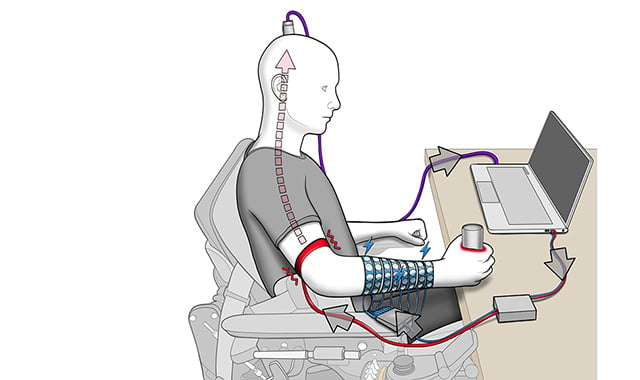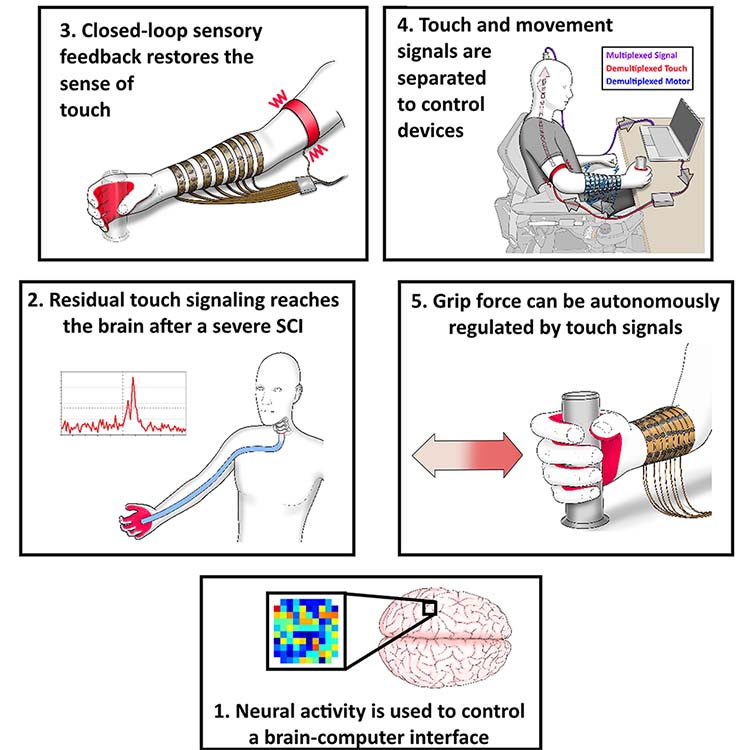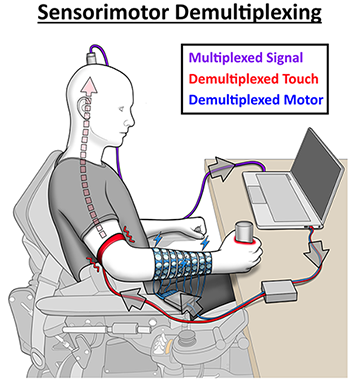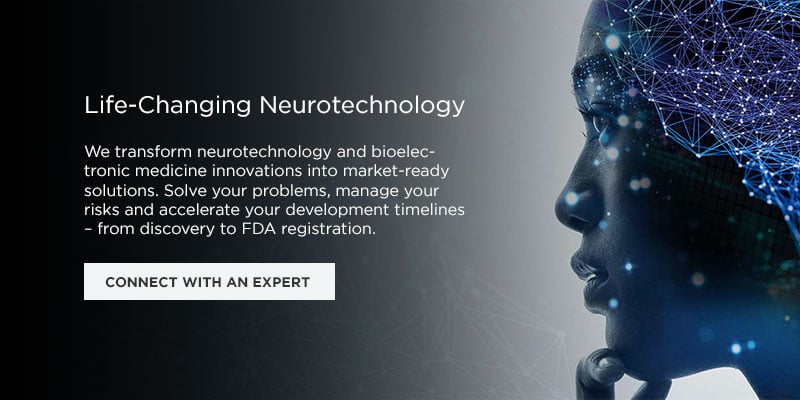Restoring the Sense of Touch in Those with Spinal Cord Injury

Helping a person regain movement in a paralyzed limb is a momentous achievement. But movement isn’t enough.
Being able to pick up a cup of water with a once-paralyzed arm and hand isn’t useful if you can’t sense how tightly you are gripping the cup. You are either going to grip it so tightly that it breaks or so loosely that it falls.
During a five-year clinical trial with Battelle and The Ohio State University Wexner Medical Center, great strides were made on both fronts – movement and sense of touch.
Study participant Ian Burkhart used Battelle’s NeuroLife® Neural Bypass Technology in more than 480 sessions in labs at Ohio State. The study demonstrated that a person with a spinal cord injury can use a brain-computer interface (BCI) to simultaneously reanimate motor function and sense of touch by using residual touch signaling from his own hand.
What does that mean?
Because of his injury, Ian cannot detect when he touches small objects if they are obstructed by his hand (example: pencil) and without constant visual attention is just guessing when he touches larger objects. But we’ve found that a computer can be trained to reliably detect otherwise undetectable touch (subperceptual) from an electrode array implanted in Ian’s motor cortex using artificial intelligence/machine learning. When the computer detects the touch, it triggers haptic feedback on skin that Ian can feel.

“When we discovered that subperceptual sensory information could be recorded from Ian’s motor cortex, the possibilities became limitless,” said Sam Colachis, Research Scientist in the Medical Devices business line at Battelle. “This gave Ian access to a completely new signal, allowing him to actuate external devices for both motor and sensory reanimation.”
Touch signals from Ian’s brain also can be used to control his grip intensity. This is where the previous cup example comes into play. Controlling that grip intensity means fragile objects aren’t crushed and heavy objects aren’t dropped.
“If Ian’s grip becomes loose, the system can overcorrect and give him a stronger grip without requiring any of Ian’s attention,” said Sam.
 Another significant finding in the study is that during real-time BCI operation, touch and movement signals can be demultiplexed (separated). That means Ian can simultaneously control multiple devices with his brain. It relieves him of the burden of constantly looking at his hand and thinking of movement for significant periods while he’s moving an object.
Another significant finding in the study is that during real-time BCI operation, touch and movement signals can be demultiplexed (separated). That means Ian can simultaneously control multiple devices with his brain. It relieves him of the burden of constantly looking at his hand and thinking of movement for significant periods while he’s moving an object.
What’s the real-world impact of this? Ian can multitask. He can watch TV and pick up a glass of water and take a drink at the same time. He doesn’t have to tear his attention away from the TV to concentrate on the glass.
Findings from the study were recently published in the scientific journal Cell. Check out the full text here.
Although the study wrapped up in 2019, Battelle continues to work on this technology. At the top of the priority list is a take-home BCI system for individuals with tetraplegia. The goal is to provide technology options to these individuals to improve their everyday lives.
Disclaimer: This is an investigational device, it's not commercially available, and it has not been cleared or approved by the FDA. Results shown are from studies performed.

BATTELLE UPDATES
Receive updates from Battelle for an all-access pass to the incredible work of Battelle researchers.